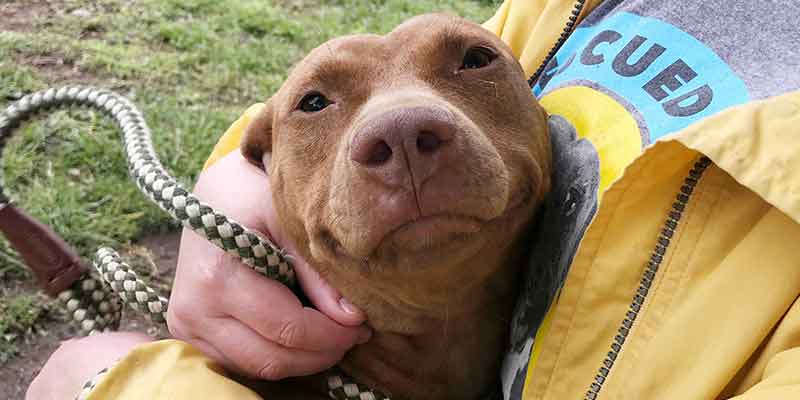Bringing a new dog home is very exciting! You might want to rush out and take your dog to a pet store to pick out a new collar, to a dog park or for a swim. However, all that activity and excitement can overstimulate a dog who has just left her previous home or shelter. Furthermore, lots of new situations, noisy environments and meeting new strangers is a recipe for an overwhelmed new pet!
For this reason, we recommend a homecoming adjustment period after bringing a new (foster or adopted) dog home. This period gives dogs time to slowly get used to a new environment with new sights, sounds and people. It also helps them adjust to a new routine and sets them up for success.
The decompression period should last a minimum of two weeks.
However, it may take longer for some dogs to adjust. During this time, you will create new habits and routines and limit your dog’s activity and stimulation. Avoid taking dogs to any dog parks, pet stores or restaurants for at least two weeks. Additionally, limit bathroom breaks to the backyard or an area close to home. Also, restrict exercise to the yard or indoors and to short walks in your neighborhood. Further, limit car rides (except for veterinary visits) too. In other words, limit your dog to the small environment of your family, your yard and your house.
1. Set up a safe space when bringing a new dog home.
Set up a safe space for your new dog that they can retreat to if they feel uncomfortable or overwhelmed. A few dogs will prefer a crate, but avoid crating a new dog who isn’t used to being in one. Instead create a space in a spare room using some indoor portable fencing. This fencing is called an exercise pen or “ex-pen” (ask at the pet store or buy it used on Nextdoor). Make the area inviting with soft bedding and long-lasting chews like bully sticks or stuffed Kong.
2. Teach them to be alone.
Gradually start teaching your dog to learn to be alone during this time to prevent separation anxiety. Give them short periods of alone time every day (30 minutes at first, working up to longer periods). If possible, take time off from work when you bring your new dog home as you would a new baby.
3. Supervise!
Don’t give the dog full access to the house even when supervised (especially if you have to leave them alone). Instead, keep a small, light leash on the dog while you both are hanging out around the house. This will allow you to guide your dog off furniture or coax them outside if needed. For safety, never leave a leash on the dog when they’re unsupervised as the leash may catch on something. Remember that you don’t know how your dog reacts to learning new rules in a new home. Therefore, a leash will help you keep a safe distance and give you control of them if necessary.
4. Begin training.
Training can begin when your dog comes home, including housetraining (aka potty training). Use only positive reinforcement methods to train your pet. Give your dog frequent potty breaks to ensure good house training habits. Also, make sure you’re with them so you’ll know whether the dog has actually eliminated.
5. Keep petting and touching to a minimum.
For the first few days or longer, try to pet your dog only when they solicit attention from you first. Never put your face close to a dog’s face until they’ve bonded with you and are comfortable with it. Don’t be pushy or grabby.
6. Don't punish for bad behaviors.
Instead, try to determine the reason for the behavior. Never punish a dog for growling, since this may teach the dog not to warn before their behavior escalates. If you see concerning behaviors, contact Lifeline or a certified training and behavior professional for help.
7. Slowly introduce the new dog to the resident dog.
Keep your new dog separated from existing pets with baby gates or ex pens until you can supervise introductions. When you do introductions, have someone help if needed, and introduce off of your property in a quiet setting. Have dogs meet on either side of a gate or fence first. If the dogs are social and wiggly and aren’t stiff, growling or directly staring, allow the dogs to move closer. Keep their leashes loose to reduce tension. If their body language is loose and not stiff, drop their leashes, but leave them on the dogs at first. Once you let them interact, make sure they have supervision and you do not see stiffness or other stress signs.
When you give your dog enough time to adapt, they’ll blossom and become a wonderful new family member. For more information, check out this article by world-renowned behavior consultant Pat Miller on recognizing dog stress while adjusting to a new home.





